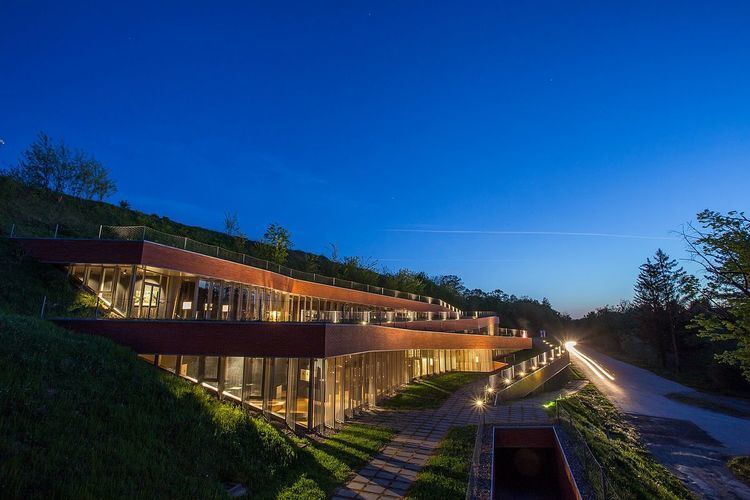Collection size permanent exhibition Curator Mirna Crnković Established June 2015 | Type Archaeological museum Director Mirela Hutinec Website www.vucedol.com Phone +385 32 373 930 | |
 | ||
Hours Open today · 10AM–4PMWednesday10AM–4PMThursday10AM–4PMFriday10AM–4PMSaturday10AM–4PMSunday10AM–4PMMondayClosedTuesday10AM–4PMSuggest an edit Similar Gradski muzej Vukovar, Eltz Manor, Vukovar water tower, Vuka, Ovcara Memorial Center Profiles | ||
Muzej vu edolske kulture vu edol culture museum
Vučedol Culture Museum (Croatian: Muzej vučedolske kulture) was established by a Croatian Government Decree 21 February 2013 as a national museum. This is the result of many years of efforts in Vučedol because its character is classified in the first row of archaeological parks and entered in the archaeological map of this part of Europe.
Contents
- Muzej vu edolske kulture vu edol culture museum
- Archaeological site Vuedol
- Exhibitions
- Floor plan
- References
Archaeological site Vučedol
The Vučedol archaeological site is located on the right bank of the Danube River, four kilometres downriver from Vukovar at the spot where an intermittent watercourse in a loess plateau 25 metres high cut a narrow steep valley on the way towards the river. Both sides along the pass towards the Danube make up the archaeological site, on the left is the Karasović Vineyard, and on the right is a large complex which include the Streim Vineyard, the Streim Cornfield and artificially separated from them is a little plateau known as Gradac, which with later excavations was confirmed as being the metallurgical and cult centre of the site. Vučedol is one of the most significant archaeological sites in Europe.
The first investigations of the site date back to 1897. This attractive location was first inhabited in about 6,000 B.C. at the time of the first farmers, and more or less it was inhabited intensively through the whole of prehistory. The period between 3,350 – 2,300 B.C. was the most intensive period of its existence and in that period it was undoubtedly the most significant European centre. Since this was also the time of the early settlements of Troy (Troy I and II) many analogies can also be found with the archaeological material from Vučedol. More precisely, we can also characterise Vučedol as the European Troy by its contemporaneousness, but even more so by the continental significance of the site and its finds.
Archaeological excavations to date are able to very precisely reconstruct the daily life and customs of four cultural phenomena which in that time swept through Vučedol (Baden, Kostolac, Vučedol and Vinkovci). It was a turbulent time of the immigration of the first Indo-Europeans and their relationship with the natives, the blending of material cultures and religions. Each of the above-mentioned cultures had its own interesting separate destiny in Vučedol, however the most detailed one able to be reconstructed is the Vučedol which also gave its name to this site. Vučedol reached a real peak in the intensity of settlement right in the period of the Vučedol Culture (3,000 – 2,500 B.C.). Excavations show that the culture was literally born in this area and that for along time it was its most significant centre. This cultural phenomenon at its peak completely or partially covered 14 of today’s European countries – the Czech Republic, Slovakia, Austria, Hungary, Romania, Slovenia, Italy, Croatia, Bosnia and Herzegovina, Serbia, Montenegro, Kosovo, Albania and one settlement has even been registered in Eastern Greece.
Exhibitions
Floor plan
Museum floorplan / 19 rooms
Each room has a certain theme and topics are: geological position of Vučedol, foundation of culture, the arrival of the Indo-Europeans, livestorck breeding, farming, hunting and fishing, Vučedol house, weaving and clothing, handicrafts and footwear, metallurgy, ceramics, horizon, calendar, graves, natives, religion, successors, the formation of the Museum.
